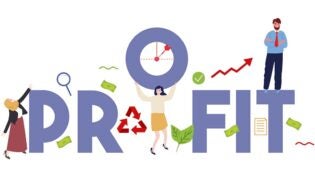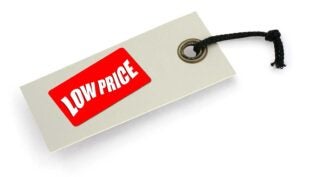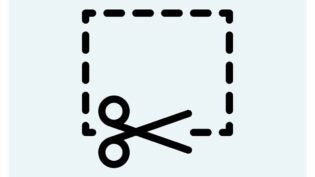How to Find Out What You’re Actually Spending on Customer Acquisition
By: YEC

Getting a new customer isn’t easy, but it can be done. Before you break out the bubbly to celebrate, however, you’ll want to know how much money you spent to actually get that new customer. Talk about a complicated undertaking! As an accountant and former CFO, I’ve gone through this exercise with clients and former employers, but tackling it in my own company has been a real eye-opener.
What every business needs to know is that understanding your costs has more to do with aligning your margins than it does with profit. In our company, understanding what it costs to bring a customer in the door ensures we can truly calculate the cost of a project. If we just calculate profits using the cost of the product or service, we’ll have a gap in our metrics. After all, we don’t want to spend more money bringing in a customer than we actually make on the sale.
Understanding Buyer Behavior
If we could truly understand our buyers’ behaviors and predict the future, I think I could retire early. To correctly understand how much it costs to bring a customer in the door, we evaluated the following costs:
Lead generation: For us, leads come from three main sources, some with significant expenditures and some that don’t:
- Client and partner referrals. We generally considered these to be free, unless we sent them a gift or referral fee.
- Website. Obviously, there are costs associated with running a website, including hosting and web development. We also have to ask the question, “How did the lead find the website?” At Fourlane, we use Google Adwords, search engine optimization and email marketing to get customers to come to our site. All of these efforts contribute to the cost of a sale.
- Marketing/PR spend. We also spend money with a PR agency to help write and place articles on our website and in industry/trade publications (online and print) that we hope will drive more customers to our website. Our social media team concurrently helps keep our name in the mix. Can we attribute these directly to a sale? Not usually, unless a prospect specifically says, “I saw your article here” or “I received your newsletter,” but because we are spending money to attract customers, we need to attribute some of these expenses to customer acquisition.
Other costs attributed to customer acquisition: After analyzing our leads, we had to break down the other obvious and not-so-obvious costs associated with sales.
- Sales team. Our website directs leads to either call or email our sales team, who then respond with more information, a quote and the engagement letter when the customer is ready to start a project.
- Miscellaneous costs. We can’t forget the extra factors that contribute to sales, such as the cost of developing and maintaining our CRM. Without this, we wouldn’t have the data we need to truly understand the cost of customer acquisition. Similar to other companies, we also pay for email marketing software, GoToWebinar and other tools that contribute to the costs.
The Formula
After better understanding where our sales come from, we had to look at what people are buying to get an idea of how that much time the sales process for that product takes, and what it costs. Here’s how we broke it down:
Acquisition cost for consulting projects is comprised of:
- X% of marketing costs (lumping together web, PR agency, pay-per-click ads for consulting and misc. costs)
- X% of sales personnel costs (average amount of time a salesperson spends on a software sale + commission)
The percentage is tied to the percentage of sales for that line of business.
How to Calculate Your Customer Acquisition Costs
So, you are probably wondering whether you should go through this process. Other than just wanting to know, you may want to determine the cost of customer acquisition if you are trying to bring on investors or are about to sell your business. Another reason companies may do this is to ensure they are getting the most bang for their marketing spend.
Figuring out the costs of acquiring customers is complicated and multi-faceted. Here are four steps to get you there:
- Involve the right people. Accountants should not be doing this in a vacuum. Sales and marketing folks need to explain their expenditures to ensure they are in the right buckets and nothing is missed.
- Know your buyers’ behavior. With all the right people in the room, create a flow chart of how your new customers find you and what you are doing to keep current customers. Walking through this process will ensure nothing is left out of the calculation. It can also be a creative way to evaluate what is working and come up with new approaches to gathering customers. It is important to do this for everything you sell.
- Develop the formula. Your formula may look exactly like mine; it may not.
- Pull three to five specific customers. See if their buying behavior matches your flow chart and calculate their acquisition costs. Ask long-term customers how they found you to ensure you haven’t missed anything.
Getting It Right
I have to admit it: as an accountant, I really want to make sure my numbers are correct, we haven’t left out any expenses for a sale and that the percentages are exactly right. The CEO in me also needs to know this information to determine what costs can realistically be trimmed (assuming the acquisition cost is too high) or what processes should be adjusted. It also pushes me to think about growth: are there other marketing channels we need to pursue, or can we grow through more low-cost channels?
Figuring out how much it costs to get a new customer is a complex process, and every company will differ as to how it arrives at its own formula. However, coming up with that formula is very valuable, and I highly encourage businesses to truly take a look at their customer acquisition costs — it could just be the difference between growing a business, and going out of business.
Author: Marjorie Adams is president/CEO of Fourlane, a firm that improves the efficiency of client accounting departments.












